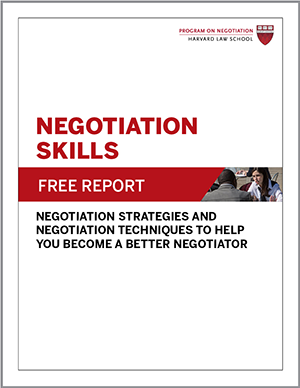How can you engage in conflict management with someone who doesn’t trust you? Consider bringing in someone the other party does trust to mediate the dispute, as the FBI and the occupiers of the Malheur National Wildlife Refuge in Oregon did to promote a peaceful end to their standoff in February 2016.
Strategic patience
On January 2, 2016, an armed group of protestors took over the wildlife refuge. They demanded that the federal government cede ownership of the land to locals and release two Oregon ranchers recently re-imprisoned for burning federal property.
Federal authorities allowed the protestors to come and go from the refuge and to speak to the media. In learning from previous violent confrontations with antigovernment protestors, such as the Ruby Ridge standoff, the FBI had established a policy of “strategic patience” in managing conflicts, hoping to give protestors time to cool off and surrender. The authorities also knew they were creating opportunities for the occupiers to make incriminating public statements that could be used to arrest them, reports National Public Radio.
Negotiation and violence
On January 21, the occupiers’ leader, Ammon Bundy, traveled to a nearby FBI operations base and spoke to an FBI crisis negotiator by phone. The two men agreed to continue their efforts at conflict negotiation the next day. The following day, however, Bundy abruptly changed his mind.
On January 26, FBI agents and Oregon state police officers stopped Bundy and other occupiers on a highway outside the refuge. When one of the occupiers allegedly reached into his jacket pocket for a gun, two of the Oregon police officers shot him dead. (The U.S. Justice Department investigation into possible misconduct by FBI agents on the scene accused them of failing to disclose that they had discharged their weapons during the confrontation, although they didn’t hit anyone.) Bundy and other occupiers were arrested. In court the following day, Bundy asked the remaining occupiers to leave the refuge. All but four acquiesced.
Negotiating with the FBI around the clock, the remaining four occupiers demanded to be allowed to leave the refuge without being arrested. A breakthrough came when the FBI enlisted Christian evangelist Franklin Graham to try to engage in conflict resolution by phone. Over the course of a week, Graham worked to bring the occupiers “to a point where they were ready to leave of their own volition,” according to National Public Radio.
The FBI moves in
On February 10, FBI agents in armored vehicles hemmed the last four occupiers into their camp and ordered them to lay down their guns and surrender. The four streamed audio of their talks with the FBI live on YouTube. At first they accused the FBI of betraying them and rejected the demands. Eventually, though, they announced they would surrender the following morning after meeting with Nevada state legislator Michele Fiore and with Graham.
After landing in Portland, Fiore, a vocal supporter of the occupation’s leaders, began speaking with the remaining occupiers while racing to the refuge. Fiore reassured them that many of their fellow protestors had already been released from jail, suggesting they might follow a similar path. Eventually, she convinced the four that the FBI would not move on them overnight. Finally, they again agreed they would surrender in the morning.
Early the next day, the FBI brought Fiore and Graham to the outskirts of the refuge. The four holdouts spoke by phone with Fiore, Graham, and some anti-government activists. The mediators persuaded the occupiers to surrender, as up to 30,000 people listened to the live-streamed conversation.
Lessons from a tense standoff
Business negotiators managing conflicts with distrustful parties may find the following conflict resolution tactics helpful:
- Exercise strategic patience. Resist the urge to respond immediately to provocative acts. A slow-paced approach to conflict resolution can help de-escalate tensions while also strengthening parties’ motivations to end the dispute.
- When possible, meet in person. Bundy cut off talks with the FBI after it failed to provide him with a negotiator he could meet with face to face. Business negotiators would be wise to meet with counterparts in person when possible. More so than phone calls, face-to-face meetings humanize negotiators and foster rapport.
- Enlist those the other party trusts. Thanks to their conservative credentials and sympathy to the occupiers’ cause, both Graham and Fiore played crucial roles in resolving the standoff. Look for people you and your counterpart both trust to mediate your dispute.
Adapted from an article in the June 2016 issue of the Negotiation Briefings newsletter, published by the Program on Negotiation at Harvard Law School.





